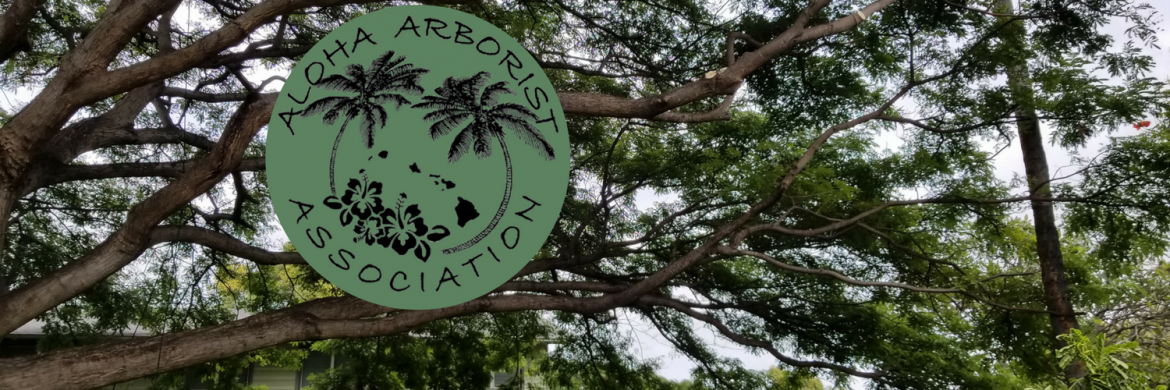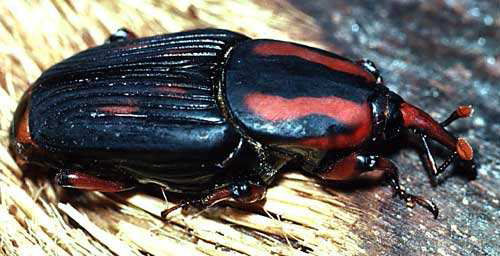- Distribution: from South Carolina south to the Florida Keys and west toTexas. Native to Florida.
- Hosts: Canary date palm, date palm, sabal palm, fishtail palm, coconut, latan palms, royal palm, and Washingtonia spp. Stressed, damaged, pruned, and recently transplanted palms are the most susceptible.
- Symptoms: General decline of young fronds, older fronds may begin to droop, top of the palm falls over, death.
- Management: cultural practices that promote palm health (proper fertilization and irrigation). Avoid wounding palms. Some control from insecticides such as acephate, chlorpyrifos, or imidacloprid, but results are inconsistent. Once infested, there is little chance of saving the palm. Remove and destroy the infested palm material before adults emerge to prevent subsequent infestations. Decline occurs in 3-5 weeks from the time of the initial infestation.
Source: Giant Palm Weevil or Palmetto Weevil (Rhynchophorus cruentatus), by Kim Gabel, Adrian Hunsberger, and Catherine Mannion, University of Florida IFAS Extension, August 2006.

